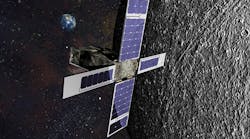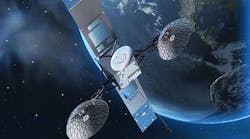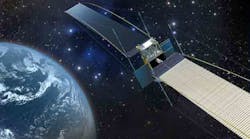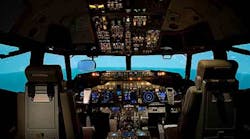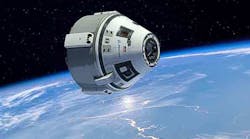Lockheed Martin was awarded a new NASA contract to launch a 6U CubeSat satellite with imaging capability on a lunar mission with Orion EM-1, in 2018. The satellite, called SkyFire, will be built by Lockheed and operate in public-private partnership: the contractor will gain access for the satellite to the Orion Exploratory Mission; and NASA will receive data that SkyFire gathers during the mission.
An infrared camera will take high-quality images from a lighter, simpler satellite unit, and the low-mass payload will mean a lower project cost and easier maneuverability in space.
“The CubeSat will look for specific lunar characteristics like solar illumination areas,” stated James Russell, Lockheed Martin SkyFire principal investigator. “We’ll be able to see new things with sensors that are less costly to make and send to space.”
A Lockheed Martin development team working on the project involves “early-career engineers” working in partnership with the University of Colorado Boulder.
“SkyFire’s lunar flyby will pioneer brand new infrared technology, enabling scientists to fill strategic gaps in lunar knowledge that have implications for future human space exploration,” stated John Ringelberg, Lockheed Martin’s SkyFire project manager.
CubeSats are miniaturized satellites developed for space research, made up of multiples of 10×10×11.35 cm cubic units. CubeSats have a very low mass (no more than 1.33 kg) and often use commercial off-the-shelf components for electronics and structure.
Orion EM-1 is the first planned flight of the Space Launch System, NASA’s new expendable launch vehicle, using a design derived from the now retired Space Shuttle program. NASA plans to transform the Ares I and Ares V vehicle designs into a launch vehicle usable for both crew and cargo. Reportedly, the SLS will be the most powerful rocket ever built, with about 20% more thrust than the Saturn V and a comparable payload.
In addition to SkyFire, Orion EM-1 will carry a total of 13 CubSats on different missions.
According to Lockheed, the lunar mission offers a test of the new, infrared technology that, if successful on SkyFire, could be used for cost-effective studies of a planet’s resources before humans arrive. This might include analyzing soil conditions, evaluating landing sites, and identifying a planet’s most livable areas, Lockheed said.
“For a small CubeSat, SkyFire has a chance to make a big impact on future planetary space missions,” according to Russell. “With less mass and better instruments, we can get closer, explore deeper and learn more about the far reaches of our solar system.”
